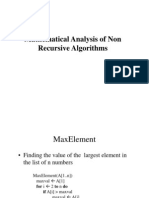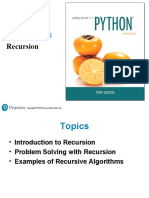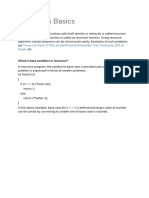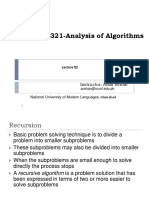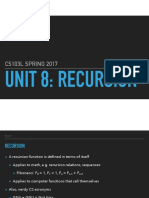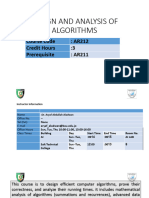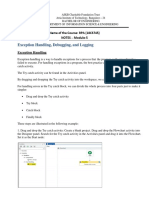0% found this document useful (0 votes)
24 views32 pages11 Recursion
The treasure island problem involves selecting items to maximize total value within a weight limit. It can be solved recursively by:
1) Considering all possible combinations of selecting the first item or not
2) Recursively solving the subproblem of selecting from the remaining items within the reduced weight limit
3) Returning the highest value combination found
Uploaded by
Safi RehmanCopyright
© © All Rights Reserved
We take content rights seriously. If you suspect this is your content, claim it here.
Available Formats
Download as PPT, PDF, TXT or read online on Scribd
0% found this document useful (0 votes)
24 views32 pages11 Recursion
The treasure island problem involves selecting items to maximize total value within a weight limit. It can be solved recursively by:
1) Considering all possible combinations of selecting the first item or not
2) Recursively solving the subproblem of selecting from the remaining items within the reduced weight limit
3) Returning the highest value combination found
Uploaded by
Safi RehmanCopyright
© © All Rights Reserved
We take content rights seriously. If you suspect this is your content, claim it here.
Available Formats
Download as PPT, PDF, TXT or read online on Scribd
/ 32





















